Bearing Capacity Definitions
Important Point
- Bearing capacity: It is the loading capacity of the soil.
- Ultimate bearing capacity (qu): That is the least gross pressure that will result in the shear collapse of the supporting soil directly below the foundation.
- Net ultimate bearing power (qun): it is the net strain that can be added to the foundation by external loads that can only initiate the collapse of the underlying soil. That is equal to the ultimate carrying potential minus the stress due to the weight of the foundation an overload immediately above it. Assuming that density (concrete), and soil density (are similar enough to be treated equal, then
qun = qu – Df
Where,
Df = Depth of the footing,
- Safe bearing capacity: This is the ability to hold after adding the factor of safety (FS). They are of two kinds,
- Net bearing capacity (qns): That is the net surface pressure that can be added to the soil in the event of shear failure. It is provided by the
- Safe gross capacity(qs): That is the highest gross pressure that the soil can bear safely without shear failure. It is given below,
qs = qns + Df
- Allowable bearing pressure: It is the highest pressure of the soil deprived of any shear collapse or failure of settlement.
Also, Read: What Is SBC of Soil? | Safe Bearing Capacity of Soil
Techniques for Evaluating Bearing Capacity
The different methods for measuring the potential of the bearing can be set as provided.
- Presumptive Analysis.
- Analytical Methods.
- Plate Bearing Test.
- Penetration Test.
- Modern Testing Methods.
- Centrifuge Test.
Theory of Terzaghi’s Bearing Capacity
Assumptions in the Bearing Capacity Principle of Terzaghi
- The depth of the foundation is less than or equal to the width of the foundation.
- The foundation base is coarse.
- The soil just above bottom of the foundation has little shear strength; it is just an overload it against overturning load.
- Surcharge up to the foundation base shall be considered.
- Load added is vertical and non-excentric.
- The soil is homogeneous and isotropic.
- The ratio of L/B is infinite.
Consider a foundation of width B and depth weighted with Q and lying on soil of unit weight. The failure zone is split into three sections, given below.
- Zone 1 is an aggressive Rankine zone. The active Rankine is at the angle of 45 + Ø/2
- Zone 2 are the radial shear zones And form one set in the shear pattern. It zones release from outer edge of the centre of the base of the foundation.
- Zone 3 is a passive zone. These are at 45 + Ø/2, the horizontal.
Although the base is rugged, the surface between the base and the two sliding surfaces exists in a balance and it became an arrangement part.
The surfaces are rising to the horizontal. At the moment of failure, the strain from each ground is proportional to the product of the PP passive earth pressure and the cohesion force Ca. If the slip happens around these faces, the resulting earth pressure works to the normal around each face in a vertical direction. If the weight of the soil is not taken the balance of the soil demands that
Qd = 2Pp +2Ca SinØ = 2Pp + Bct tan Ø
The passive pressure desirable to create a slip may be categorized into two sections. The force reflects the resistance due to the weight of the mass. The fact of implementation shall be located at the lower third point. The force is at the midpoint of the touch surface. The value of the bearing power can be determined as:
Qd = 2 [Pp + Pc + Pq +( 0.5 Bc tan Ø)]
Introducing the following values into eqn (2):
- Nc = (2Pc/Bc) + tan Ø
- Nq = (2pq/BγDf)
- Nγ = (4Pq/B2γ)
Quantities are denoted as the bearing capacity factors.
Bearing Capacity Failures
Failures of bearing capacity are considered as a base failure which happens when the shear of stress in the soil exceeds the shear strength of the soil.
Also, Read: Types of Weirs
- General Shear Failure.
- Local Shear Failure.
- Punching Shear Failure.
1. General Shear Failure
A strip footing lying on soft clay and loose sand. In the ground, shear failure happens at the load and the failure surface spreads to the surface of the ground.
Whenever this failure mode is denoted as a general shear failure. In general shear failure, a heave is regularly detected on the sides. A continuous, well-defined, and distinct surface of failure forms between the edge of the base and the ground surface.
Dense or rigid soil undergoing low compressibility suffers this loss. The constant bulging of the shear mass adjacent to the foot is evident. Failure is accompanied by a tilting of the foot.
Failure is abrupt and devastating, with a sharp curve top. The length of the disruption beyond the edge of the foot is high. The form of plastic balance is originally attained at the foot edge then finally stretches down and out.
General shear failure is followed by low strain (<5 percent) in soil with considerable (>360) and broad N (N >30) with high relative density (ID >70 percent).
2. Local Shear failure
The strip footing laying on medium-consistency clay or medium-dense sand. The acceleration of the foundation is followed by abrupt shocks when the load is equal to a certain Qu value.
Failed surfaces increasingly expand outwards from the foundation. Even so, in happening of the collapse of surfaces, an extensive measure of the foundation is compulsory to extend to the surface of the earth.
The load at which this occurs is equal to Qu‘s. After that point, the rise in legislation is followed by substantial growth in settlements. This types of failures are recognized as local shear failures. Where there is a significant vertical position, the only heave is observed.
Substantial soil compression below the foundation and partial production of the plastic balance is observed. Failure is not immediate, and there is no tilting of the foundation.
Weakness of the surface does not meet the surface of the earth and a minor bulging of the soil at the foundation is found. Failure of the surface is not clearly established. Failure is marked by a significant determination.
There is no well-defined peak in the curve. Local shear failure is followed by a large strain (>10 to 20 percent) of soil with a slightly low (<28o) and low N (N<5) relative density (ID>20 percent).
For local shear failure, the bearing capacity is found by the following equation:
qu= c’Nc‘ + γDNq‘ + 0.5 γBNγ‘
For local shear failure, the local shear limits as assumed below are used to compute the ultimate bearing capacity:
- c’ = (2/3)c
- tanɸ’= (2/3) tanɸ’
- Nc‘, Nq‘, and Nγ‘ are the bearing capacity factors corresponding to ɸ’.
Also, Read: What Is Superstructures | Difference Between Load-Bearing and Framed Structures
3. Punching Shear Failure
The punching shear is a failure issue in structural members such as slabs and shearing under the action of concentrated loads. A strip footing lying on thick mud or loose sand. Throughout this scenario, the fault surfaces may not reach the ground surface.
At the load of Qu, the foot struggles, and at this fact the load-setting curve becomes steep and functional linear. This form of failure is known as a punching shear failure. When we’ve seen, even more so, there’s just a vertical rotation of the base.
This form of loss occurs in soils with very high compressibility. Failure patterns are not found. There is no bulging of soil at the foundation. Loss is marked by very great settlements.
A constant settlement with no rise is found in the curve. A cylindrical control surface shall be called around the burdened area or the column area at a specific distance. This distance is equal to the depth of the slab.
The average shear stress on the control surface shall not exceed the specification power. Often this design strength is equal to the tensile strength.
The results of the moment transfer at the column or slab junction are facilitated by the organization of the punching shear. The measurement of the punching shear is based on numerous standards.
These criteria are pieces that are at a specific distance from the face of the column. Of the numerous portions, the most vital things are on the face of the column and at a distance of d/2 on each side of the column.
If the shear stress in these parts exceeds the acceptable stress value, the assembly would be subjected to a punching failure. Design formulas and parameter distances will differ from one code to another. However, the idea behind the measurement of punching shear loss is the same.
Also, Read: Difference Between Whole Circle Bearing and Quadrantal Bearing | What Is WCB | What Is QB
FAQTypes of Bearing Capacity Failures of Foundation
There are three modes of failure that limit bearing capacity: general shear failure, local shear failure, and punching shear failure. It depends upon the shear strength of soil as well as shape, size, depth, and type of foundation.
General Shear Failure
General Shear Failure: This type of failure occurs in stiff clay or dense sand. In this type of failure, failure takes place at a very small strain. The load settlement curve shows a well-defined peak.
Local Shear Failure
Failure in which the ultimate shearing strength of the soil is mobilized only locally along the potential surface of sliding at the time the structure supported by the soil is impaired by excessive movement.
Punching Shear Failure
Punching shear is a type of failure of reinforced concrete slabs subjected to high localized forces. In flat slab structures this occurs at column support points. The failure is due to shear. This type of failure is catastrophic because no visible signs are shown prior to failure.
Types of Shear Failure.
- General Shear Failure.
- Local Shear Failure.
- Punching Shear Failure of foundation soils.
What Is Shear Failure?
Failure in which movement caused by shearing stresses in a soil mass is of sufficient magnitude to destroy or seriously endanger a structure.
What Are the Two Main Categories of Failures Described?
Failure due to overload, and failure due to underload.
- Failure due to loss of resources, and failure due to overload.
- Failure due to social loafing and failure due to bad luck
Foundation Failure
We define ‘foundation failure‘ to be when you notice one of the following:
- Non-Functioning Windows and/or Doors.
- Plumbing Damage or Disturbance.
- Serious and Continuous Damage to the Framing.
- Structure Risk.
Bearing Capacity
In a nutshell, bearing capacity is the capacity of soil to support the loads that are applied to the ground above. It depends primarily on the type of soil, its shear strength and its density. It also depends on the depth of embedment of the load – the deeper it is founded, the greater the bearing capacity.
Terzaghi Bearing Capacity
Karl von Terzaghi was the first to present a comprehensive theory for the evaluation of the ultimate bearing capacity of rough shallow foundations. This theory states that a foundation is shallow if its depth is less than or equal to its width.
Terzaghi Bearing Capacity Equation
He then used the superposition principle and limit equilibrium method to deduce an ultimate bearing capacity equation in which the effect of the soil weight is considered, famously known as the Terzaghi’s equation:(3) Q uv B = c N c + q N q + 1 2 γ B N γ where is the total vertical ultimate bearing capacity, is the …
Vesic Observed Types of Bearing Capacity Failures
Vesic observed three types of bearing capacity failures in soil:
- General Shear Failure: This type of failure occurs when the soil underneath a foundation shears and fails in a cohesive or non-cohesive soil. The failure surface is usually inclined at an angle of 30 to 45 degrees from the horizontal, and the bearing capacity is governed by the shear strength of the soil.
- Local Shear Failure: Local shear failure occurs in a cohesive soil when the stresses at the foundation’s edge exceed the shear strength of the soil, causing it to fail. This type of failure typically occurs in relatively stiff soils, and the failure surface is usually inclined at an angle of 60 degrees or more from the horizontal.
- Punching Shear Failure: Punching shear failure occurs when a foundation, such as a footing or slab, presses down on a soil layer, causing it to fail in a cone-shaped surface. This type of failure typically occurs in non-cohesive soils and is governed by the soil’s compressive strength.
Bearing Stress Which Would Cause Shear Failure in the Soil Below the Foundation
The bearing stress that would cause shear failure in the soil below a foundation depends on several factors, including the soil’s shear strength, the shape and size of the foundation, and the depth of the foundation. Assuming a cohesive soil, Vesic’s theory provides an estimate of the bearing stress that would cause general shear failure.
Types of Failure in Foundation
There are three major types of foundation failure, which are listed and explained below.
- General Shear Failure.
- Punching Shear Failure.
- Local Shear Failure.
Soil Bearing Capacity Failure
A bearing capacity failure is defined as a foundation failure that occurs when the shear stresses in the soil exceed the shear strength of the soil.
Failure of Footing
The failure of a footing can occur due to various reasons, including inadequate design, poor construction quality, inadequate soil preparation, or unforeseen changes in the soil condition during the construction process. Some common types of footing failures are:
- Settlement Failure
- Overturning Failure
- Sliding Failure
- Bearing Capacity
- Frost Heaving Failure
Load Bearing Capacity Definition
Loadbearing capacity is the maximum ability of a structural member or material to take loading before failure occurs.
Bearing Power Theory
Bearing capacity theory is a method used in geotechnical engineering to estimate the maximum load that can be applied to a foundation or footing without causing failure of the soil underneath. Bearing capacity theory is based on the assumption that the soil behaves as a homogeneous, isotropic, and elastic material, and that failure occurs when the soil stresses reach a critical value.
What Are the Typical Soil Failures?
There are several types of soil failures that can occur in geotechnical engineering, including:
- Shear Failure: Shear failure occurs when the soil underneath a foundation or slope fails due to shearing stresses exceeding the soil’s shear strength. The failure surface is usually inclined at an angle of 30 to 45 degrees from the horizontal, and the bearing capacity is governed by the shear strength of the soil.
- Bearing Capacity Failure: Bearing capacity failure occurs when the soil underneath a foundation fails in shear, causing the foundation to sink into the soil. This type of failure can occur due to inadequate soil bearing capacity or an incorrect footing design.
- Slope Failure: Slope failure occurs when a slope’s stability is compromised, causing the soil to slide or collapse. This type of failure can be caused by natural factors such as heavy rainfall, erosion, or seismic activity, or by human factors such as excavation or construction.
- Settlement Failure: Settlement failure occurs when the soil underneath a foundation compresses under the load of the structure, causing the foundation to settle and potentially leading to structural damage. Settlement failure can occur due to poor soil compaction, inadequate soil bearing capacity, or an incorrect footing design.
- Liquefaction: Liquefaction occurs when soil loses its strength due to an increase in pore water pressure during an earthquake or other seismic activity, causing it to behave like a liquid and potentially leading to settlement or slope failure.
- Expansive Soil Failure: Expansive soil failure occurs when soils that contain clay minerals expand and contract due to changes in moisture content, causing structural damage to foundations and other structures built on top of them.
Foundation Bearing
Foundation bearing refers to the capacity of the soil to support the weight of a foundation or footing without experiencing excessive settlement or failure. The foundation bearing capacity is a critical design parameter in geotechnical engineering and is determined by several factors, including the soil’s shear strength, compressibility, and lateral resistance.
in General Shear Failure Continuous Failure Is Developed Between
Explanation: In the case of general shear failure, continuous failure surface develops between the edges of the footing and the ground surface.
Like this post? Share it with your friends!
Suggested Read –
- Bearing Surveying
- Top 10 Cement Companies in USA
- Definition of Load Bearing Capacity
- Top 10 Best Cement Companies In India 2021
- Top 10 Bathroom Fittings & Sanitary Brands India
- Which of the Following are Types of Slope Failure?
- What Is Grouting | Types of Grouting | Advantage of Grouting
- What Does Parapet Mean | Types of Parapet Wall | Uses of Parapet Wall
- Cinder Block Vs Concrete Block | What Is Cinder Blocks | What Is Concrete Blocks
Originally posted 2023-05-04 16:50:56.
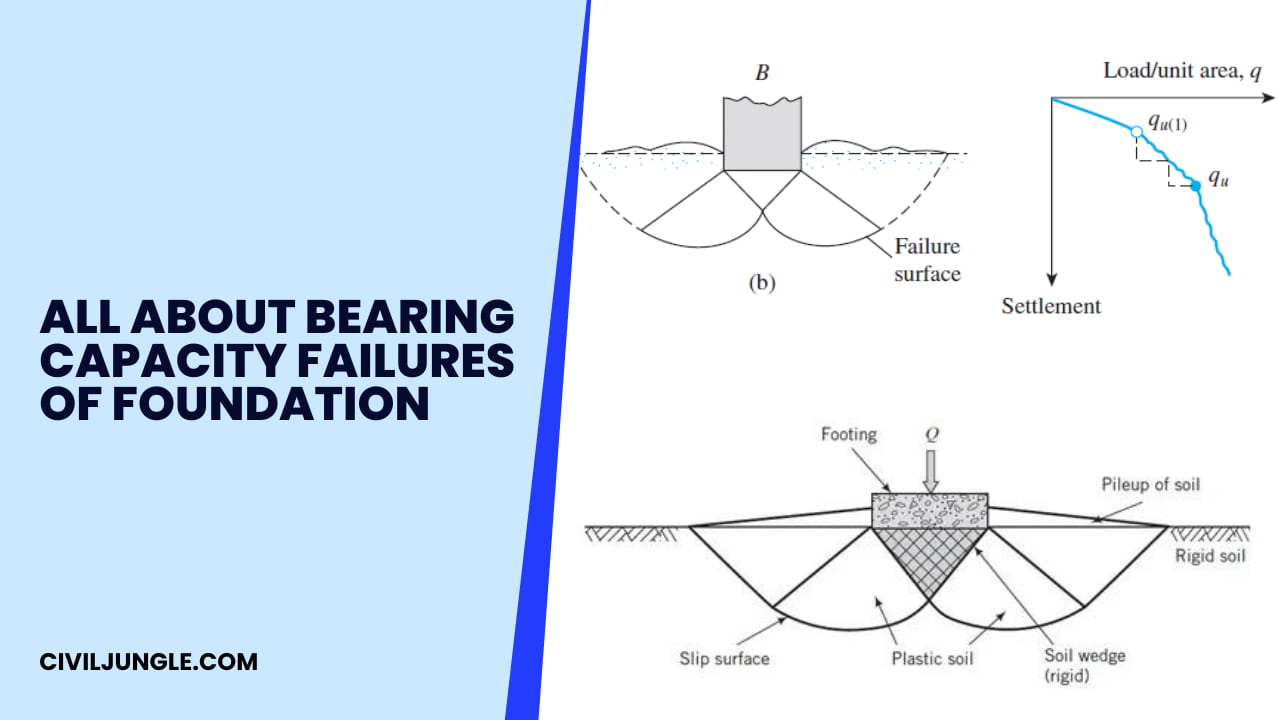
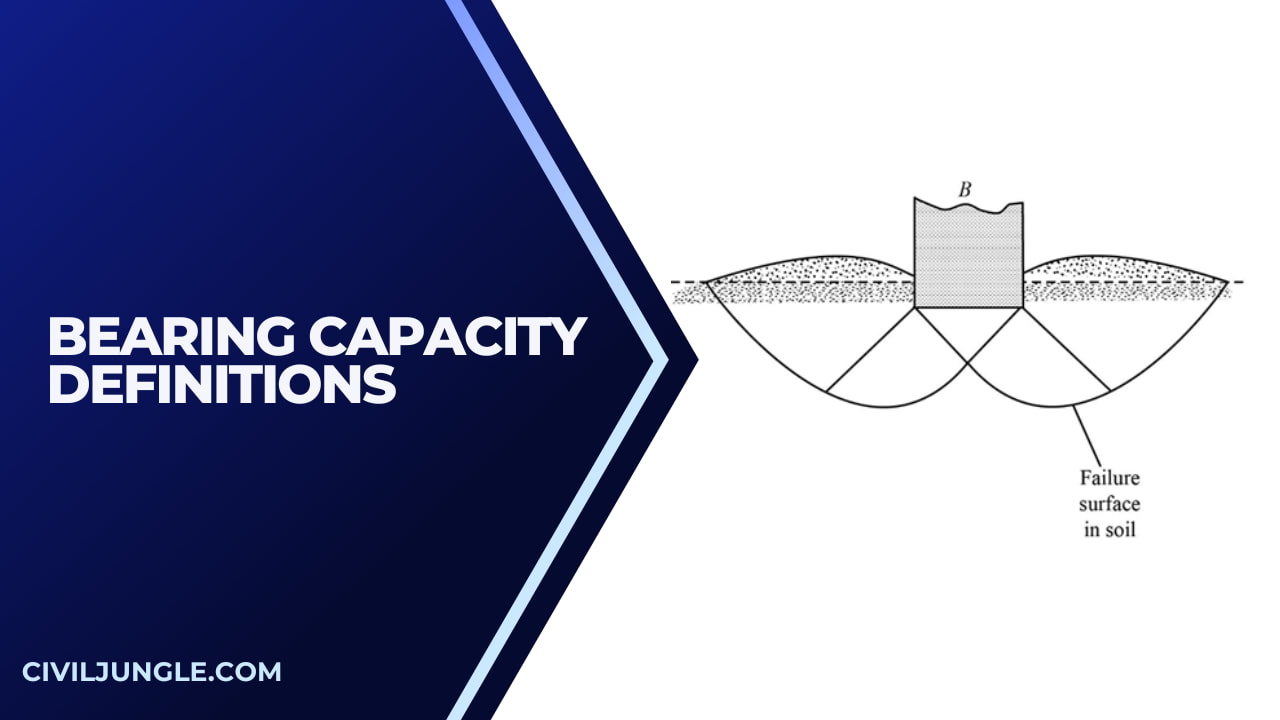

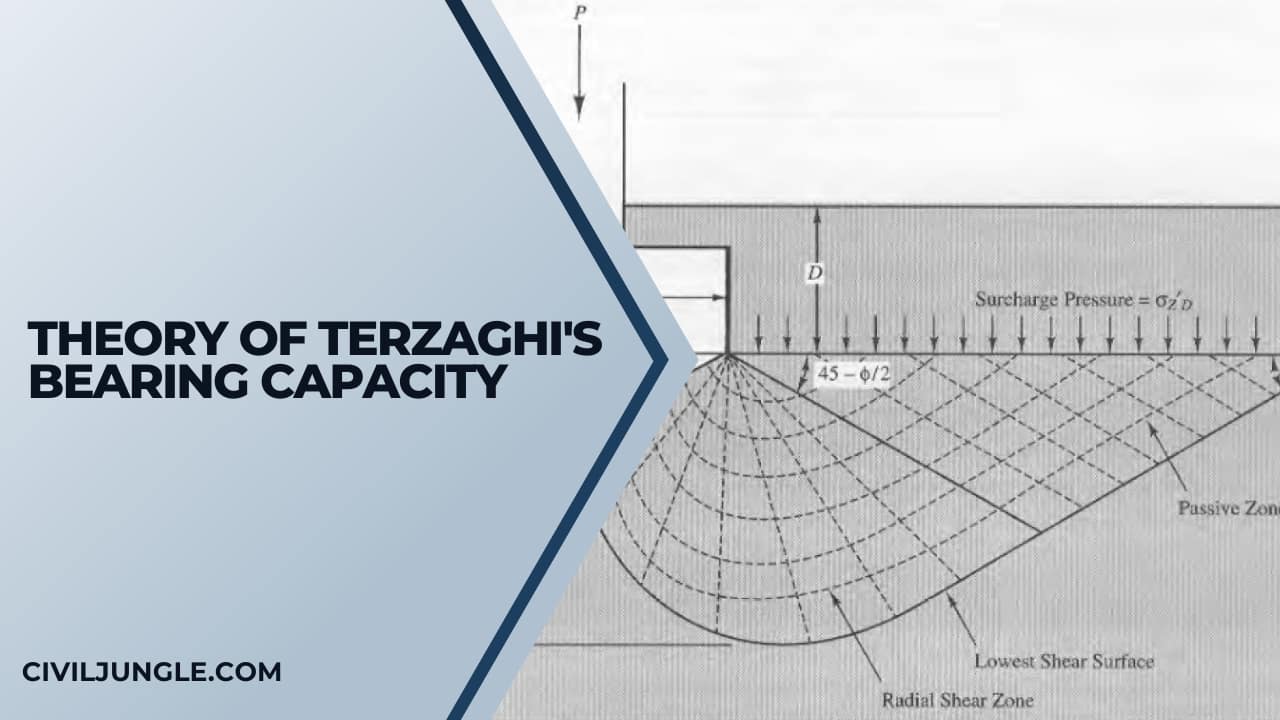
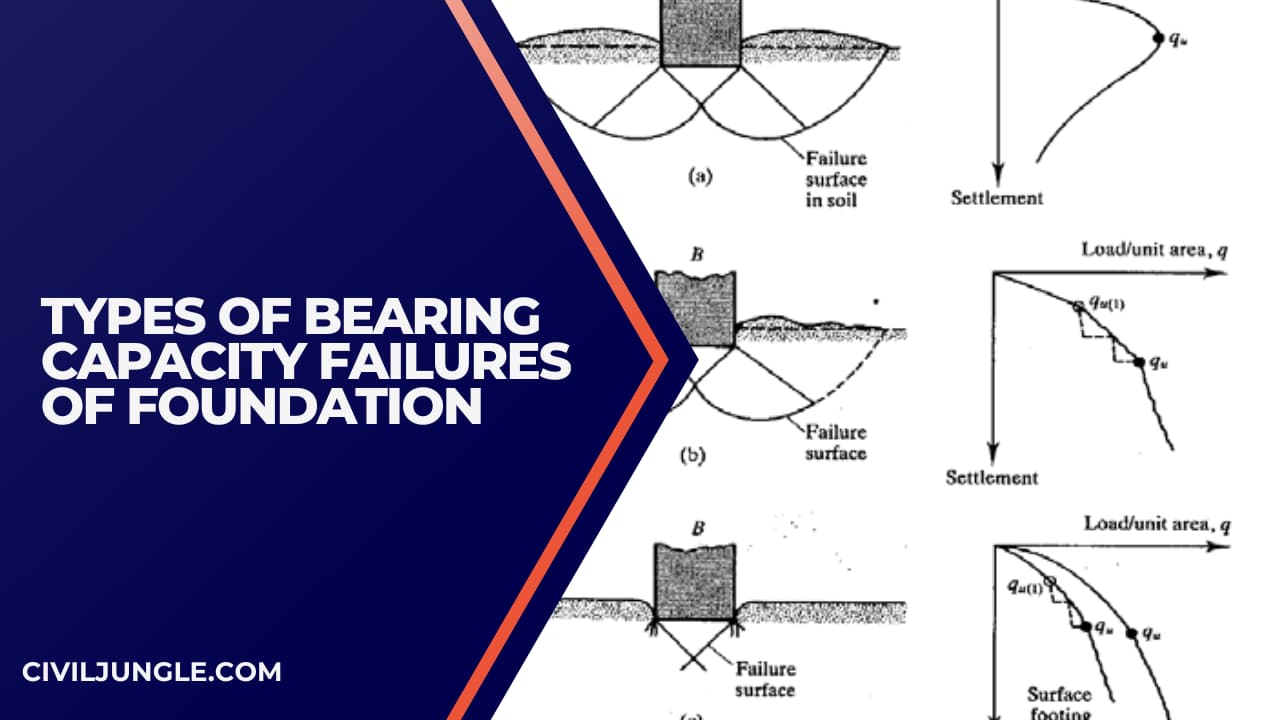
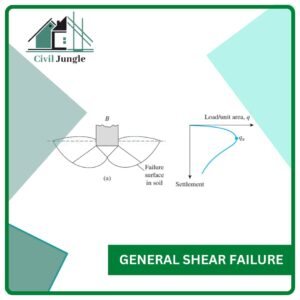
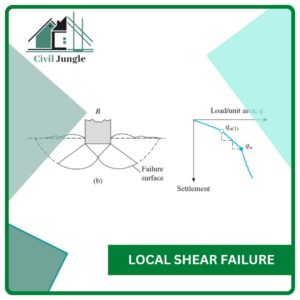
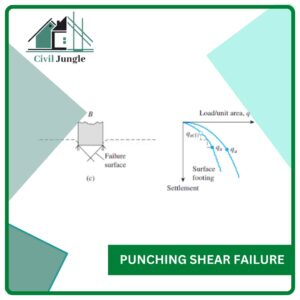

Leave a Reply